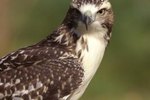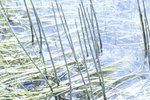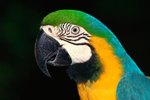
Red-tailed hawks (Buteo jamaicensis) are somewhat thick-set birds that make their homes in diverse places all over the New World. These diurnal birds often stay in one spot all year long, although populations from particularly northern landscapes frequently move south just to get through the frigid winter months.
Geography
If you're a New World resident, then a red-tailed hawk is probably familiar to you. Not only do they cover a lot of geographic turf, their population is thought to be on the rise, with no imminent threats to their well-being. People who live in the Caribbean, Canada, the United States and Central America regularly encounter individuals of the species. Red-tailed hawks live in many countries, which include but aren't restricted to Costa Rica, Cuba, Mexico, Guatemala, Barbados, Haiti, Panama, Jamaica and Belize.
Habitat
Some animals are extremely specific regarding their habitat necessities, although red-tailed hawks certainly aren't. They aren't selective about elevation, either. Red-tailed hawks do, however, favor wide, open and airy environments that provide plenty of high spots for perching. They steer clear of habitats that are too congested with trees, for example. You might find red-tailed hawks in habitat types such as agricultural land, rainforests, tundra, parks, scrubland, desert, wetlands and rugged canyons. They often are drawn to the borders of woodlands and the edges of driving paths, as well. Many of them even inhabit coastal locales.
Red-tailed hawks are also highly diverse in climate preferences, living in mild, warm climates as well as colder places of North America. Those that live in northern areas move south for the wintertime. Those that live in milder climates stay put.
When red-tailed hawks sleep, they do so in high trees, often close to the trunks. They're frequently drawn to trees that have thick leaves and branches, particularly in times of aggressive winds and cold.
Nesting Locales
When it comes to setting up nests, red-tailed hawks tend to prefer the outer portions of forested areas. Many of them also put nests together within sizable trees, as long as the trees are surrounded by lots of free space. When determining nesting spots, height is a major consideration. Red-tailed hawks feel comfortable when they can easily observe -- from above -- all of the things going on around them in their environments. Apart from trees, it's not uncommon for red-tailed hawks to use cliffs for nesting. Some even nest in the windows of buildings and residences. They build their nests using components such as dry plants, leaves, sticks and pieces of tree bark.
Just Look Higher
If you're trying to spot a red-tailed hawk around you, look higher. These birds are usually on the lookout for food while in the midst of flight or simply hanging out on utility poles. They often even linger around vast advertisement boards, as long as they're high enough in the air. This is just how red-tailed hawks go about acquiring their next meals. They employ their excellent eyesight to spot any prey that might be on the ground below them, whether rodents, birds, reptiles or fish. This hawk is a carnivore, and its diet is based around meat, meat and more meat. Once their eyes notice prey, they handily dive down and make their move, with claws extremely adept at grabbing and holding. Favorite meals include rabbits, mice, voles, snakes and ground squirrels. They also regularly feed on birds such as blackbirds and starlings. Adaptable creatures, they usually make do with whatever prey is readily accessible.
References
- University of Michigan Animal Diversity Web: Buteo jamaicensis
- The Cornell Lab of Ornithology All About Birds: Red-tailed Hawk
- IUCN Red List of Threatened Species: Buteo jamaicensis
- NatureWorks: Red-tailed Hawk
- National Audubon Society Birds: Red-tailed Hawk
- Oregon Zoo: Red-tailed Hawk
- Hawk Mountain Sanctuary: Red-tailed Hawk
- HawkWatch International: Red-tailed Hawk
- Missouri Department of Conservation: Red-tailed Hawk
- Montana Field Guide: Red-tailed Hawk
Photo Credits
-
Jupiterimages/liquidlibrary/Getty Images




